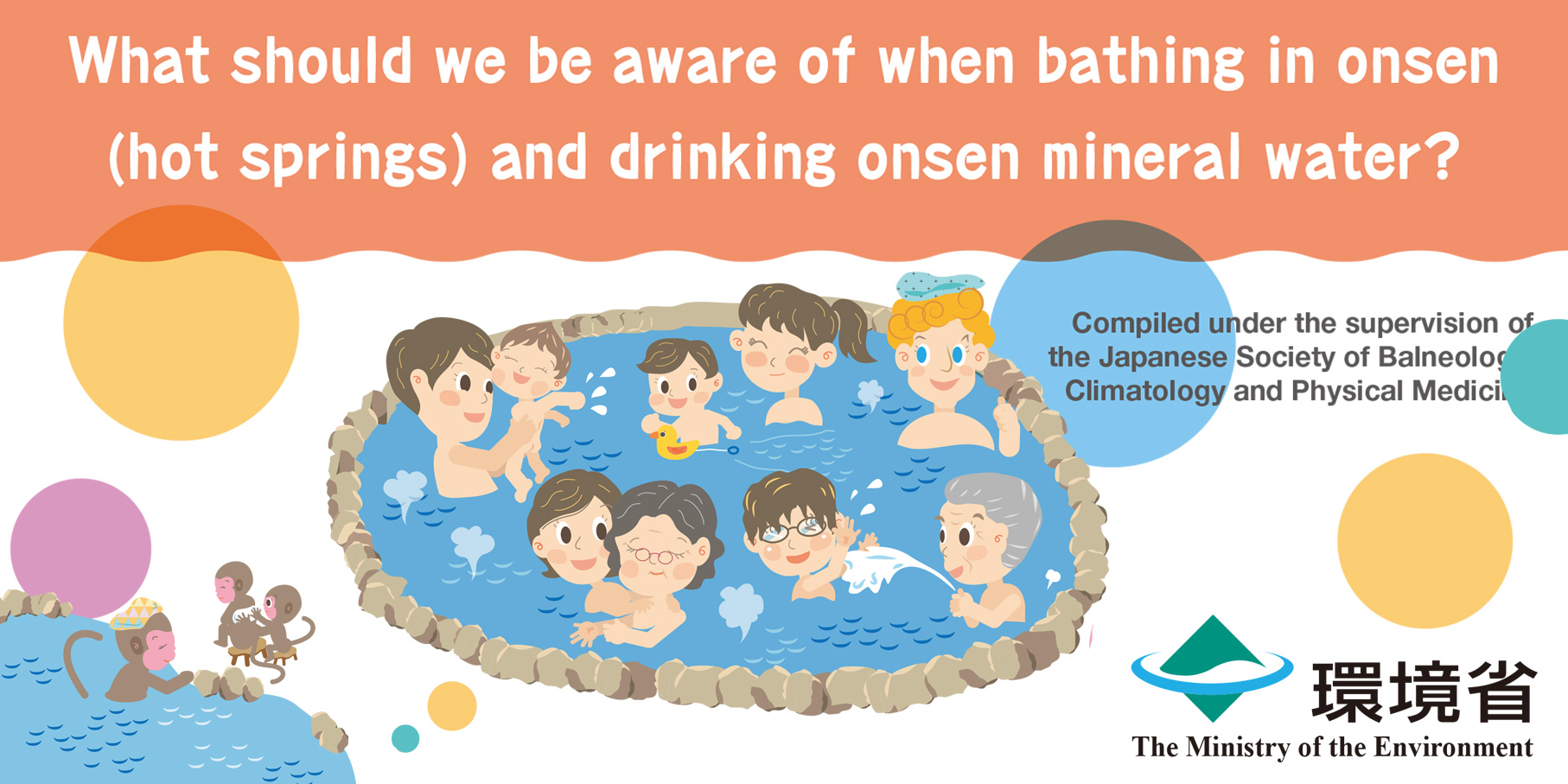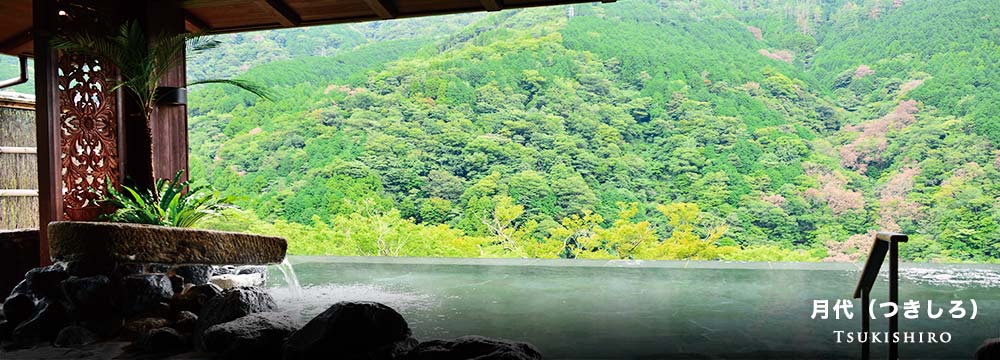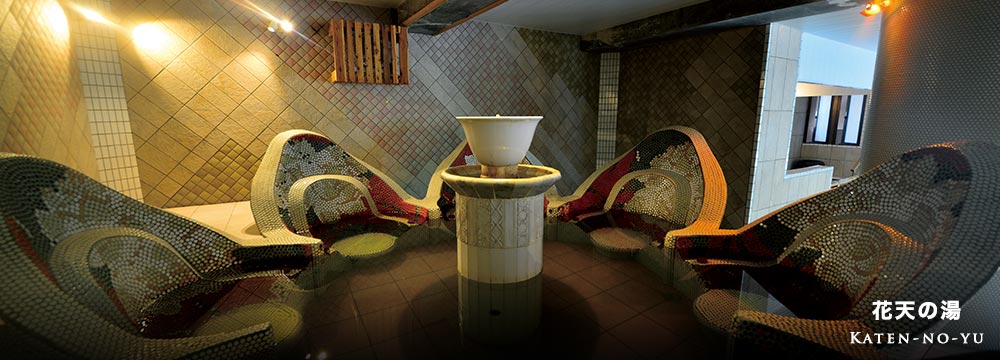
Nukumori-no-yado FURUKAWA
| Sodium - Chloride Springs | pH |
|
| (低張性 中性 高温泉) | ||
| (Hypotonic, Neutral, High temperature spring) | ||
| 旧泉質名:弱食塩泉 | ||
Ideal for:
- People with sensitivity to cold
- People with skin conditions such as scars
- People with dry skin
- People feeling stressed
- Address
- 4-353 Jozankei Onsen Nishi, Minami-ku, Sapporo, Hokkaido, 061-2303, JAPAN
- Phone
- +81-(0)11-598-2345

Official Website
Hot Spring Power Chart (5-point scale)
※For “Okuno-yu Yumemi” men's and women's open-air baths
Hydrogen Ion Concentration (pH)

- Comment
- Hot spring that warms the body and pleases the skin
Hot spring Specification
※This is an easy-to-understand expression based on the indications for each type of spring in the “Guidelines for the Mineral Spring Analysis Methods” revised in July 2014 by the Ministry of the Environment.
| ①Mental recovery | ②Insomnia | ③Promote blood circulation | ④Sensitivity to cold | ⑤Dry skin |
| ⑥Cuts | ⑦Skin diseases | ⑧Hypertension (mild) | ⑨Heartburn (drinking) | ⑩Gastrointestinal disorders (drinking) |
| ⑪Constipation (drinking) | ⑫Lifestyle-related disease | ⑬Diabetes | ⑭Gout | ⑮Countermeasures against metabolic syndrome |
| ⑯Biliary system anxiety | ⑰Anaemia | ⑱Arthritis rheumatica | ⑲Spinal pain | ⑳Improved immunity |
| ㉑Muscle pain・Neuralgia | ㉒Mild asthma | ㉓Hemorrhoidal pain | ㉔Recovery from an illness | ㉕Recovery from fatigue |
- ※Note①・・・Indications for each spring include autonomic instability and depression.(Simple springs・Chloride springs・Carbon dioxide springs)
- ※Note③・・・Indications for each spring include peripheral circulatory disturbance(Chloride springs・Carbonate springs・Carbon dioxide springs・Hydrogen sulfide type Sulfur spring)
- ※Note④・・・Indications for each spring include sensitivity to cold(Chloride springs・Carbonate springs・Sulfur springs・Carbon dioxide springs)and Iron containing springs
- ※Note⑦・・・Indications for each spring include xeroderma, atopic dermatitis, plaque psoriasis, epidermoid suppuration, chronic eczema(Chloride springs・Carbonate springs・Sulfate spring・Acid springs・Sulfur springs)
- ※Note⑨・・・Indications for drinking each spring include reflux esophagitis(Carbonate springs)
- ※Note⑩・・・Indications for drinking each spring include atrophic gastritis, gastroduodenal ulcerations(Chloride springs・Carbonate springs)
- ※Note⑪・・・For drinking, Chloride springs and Sulfate spring
- ※Note⑫・・・Indications for each spring include hypercholesterolemia, diabetes, gout(for bathing, Acid springs・Radioactive springs/for drinking, Carbonate springs・Iodine containing springs・Sulfur springs)
- ※Note⑮・・・Indications for drinking each spring include hypercholesterolemia(Sulfate spring・Iodine containing springs・Sulfur springs)
- ※Note⑱⑲・・・Indications for each spring include rheumatoid arthritis, ankylosing spondylitis(Radioactive springs)
- ※Note⑳・・・Radioactive springs
- ※Note㉑㉔・・Simple springs is suitable for rehabilitation due to its low level of stimulation, and is also called “Hot springs for neuralgia” and “Hot springs for stroke”, although these are not listed as indications by spring quality.
| Applicable to indications by spring quality | Applicable to general indications |
7 Elements of Hot Springs for Beautiful Skin
Total2Points ※The number of points represents the quality of the “Hot springs for beautiful skin”.
| Skin cleansing effect | Anti-wrinkle and skin revitalizing effects | Skin whitening and spot prevention effects |
|---|---|---|
| Hydrogen carbonate springs | Sulfate springs | Sulfur springs |
| Skin smoothing effect | Skin coating and moisturizing effects | Dewy and moisturizing effects | Cleaning effects |
|---|---|---|---|
| (Weakly) Alkaline springs | Chloride springs | Metasilicic acid(more than 100 mg/kg) | Metaboric acid (more than 10 mg/kg) |
- ※The “Four Best Beauty Springs” are said to be “Carbonate springs”, “Sulfate springs”, “Sulfur springs”, and “(Weak) Alkaline simple hot springs”.
- ※The “Chloride springs” coats the skin with a salt pack, keeping it warm and moisturized at the same time. It is also called “Hot spring for finishing touch” to be taken after the “Hot spring for beautiful skin” in which exfoliation has been removed.
- ※Hot springs containing 100 mg/kg or more of metasilicicic acid have an excellent moisturizing effect and is said to be “Hot spring for beautiful skin”.
- ※Hot springs containing 10 mg/kg or more of metaboric acid have a cleansing effect, is used in some eye drops, and is said to be effective in treating acne.
Water texture while bathing (5-point evaluation)
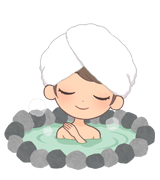
| Smooth | Velvety | ||||||||||
|---|---|---|---|---|---|---|---|---|---|---|---|
| Satiny | Supple | ||||||||||
| Fizzy | Tingling | ||||||||||
Skin feeling after bathing (5-point evaluation)
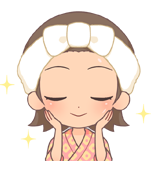
| Silky | Dryness | ||||||||||
|---|---|---|---|---|---|---|---|---|---|---|---|
| Satiny | Sticky | ||||||||||
| Dewy | Warming | ||||||||||
View from the open-air bath (5-point evaluation)
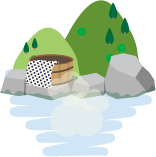
| Quiet and relaxing garden atmosphere Snow-viewing open-air bath in winter |
| Open-air bath of Okuno-yu Yumemi "Hoto-no-yu" |
| Point 3 |
|---|
Hot Spring Source Usage
| Water added No |
Heated No |
Disin fected No |
Circulated No |
Bath additive No |
|---|---|---|---|---|
| ○/× | ○/× | ○/× | ○/× | ○ |
| ※100% natural free-flowing spring water - Men's and women's public baths in the “Okuno-yu Yumemi” and some bathtubs in the new public bathhouse “Gecchi-no-yu” and “Katen-no-yu” hot spring, etc. ※Combination use of free-flowing spring water and circulating filtration (new spring water is poured in while adding water, heating, sanitizing, and circulating to maintain cleanliness)...and other baths |
||||
| Percentage of hot spring source | Almost 100% | ||||
|---|---|---|---|---|---|
| Replacement frequency of hot spring water | Once every two days for the public baths Once a day for other bathtubs |
||||
| Yield of hot spring water | Two private sources (natural gush) are combined and used | ||||
| Distance from the source to the bathtub | About 100 m (gushing out near the property) | ||||
| How hot spring water is drawn | Drawn by a pipe | ||||
| How water temperature is adjusted | Water adding and adjusting as needed Temperature of free-flowing baths is controlled by adjusting the amount of spring water poured into the baths |
||||
| Drinking Spring | None | ||||
| “Gensen-Kakenagashi” Bath | Men's and women's public baths in the “Okuno-yu Yumemi” and some bathtubs in the new public bathhouse “Gecchi-no-yu” and “Katen-no-yu” hot spring, etc. | ||||
Hot Spring Composition Table Hot Spring Analysis Report
| Spring Quality | Sodium - Chloride Springs(Hypotonic, Neutral, High temperature springs) 旧泉質名:弱食塩泉 |
|---|---|
| Color of hot spring | Almost clear and colorless |
| Scent of hot spring | Odorless |
| Dissolved substances | 3,504 mg/kg(Sum of components (1) + (2) + (3), excluding gaseous substances) |
| Temperature of spring | 64.9°C (Outside was 3°C at time of survey) |
| pH | 7.2(Neutral)※Weakly alkaline at 7.5 or higher |
| Yield | About 160 liters per minute Amount of hot spring use per person (yield / bath capacity):About 1.07 liters/person(maximum capacity of 150 people) |
Hot Spring Composition (Amount contained in 1 kg of spring)
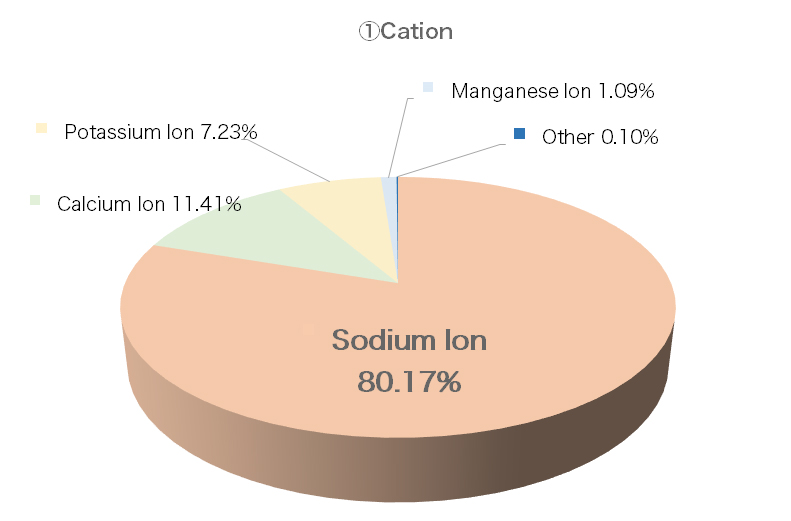 |
|||
|---|---|---|---|
| ①Cation | mg | mval | mval% |
| Sodium Ion(Na+) | 943.3 | 41.03 | 80.17 |
| Calcium Ion(Ca2+) | 117.0 | 5.84 | 11.41 |
| Potassium Ion(K+) | 144.8 | 3.70 | 7.23 |
| Magnesium Ion(Mg2+) | 6.8 | 0.56 | 1.09 |
| Ammonium Ion(NH4+) | 0.3 | 0.02 | 0.04 |
| Manganese Ion(Mn2+) | 0.9 | 0.03 | 0.06 |
| Ferro Ion(Fe2+) | 0.1 | 0.00 | 0.00 |
| Cations Total(1) | 1213 | 51.18 | 100.00 |
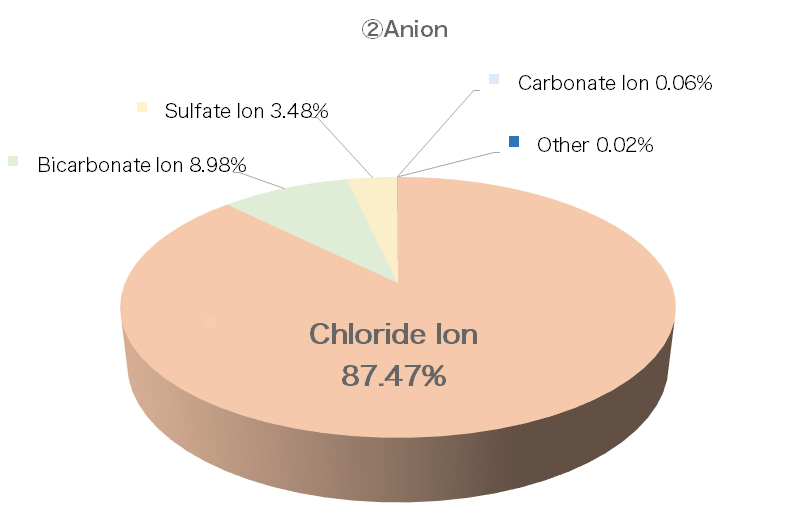 |
|||
|---|---|---|---|
| ②Anion | mg | mval | mval% |
| Chloride Ion(Cl-) | 1623 | 45.78 | 87.47 |
| Hydrogen Carbonate Ion(HCO3-) | 286.6 | 4.70 | 8.98 |
| Sulfate Ion(SO42-) | 87.2 | 1.82 | 3.48 |
| Fluoride Ion(F-) | 0.5 | 0.03 | 0.06 |
| Carbonate Ion(CO32-) | 0.3 | 0.01 | 0.02 |
| Anion Total(2) | 641.81 | 16.39 | 100.00 |
| Non-dissociated Components | mg | mmol | |
|---|---|---|---|
| Metaboric Acid(HBO2)★ | 173.4 | 3.96 | |
| Metasilicic Acid(H2SiO3)★ | 114.4 | 1.46 | |
| Meta-arsenic Acid(HASo2)★ | 4.7 | 0.04 | |
| Non-dissociated Components Total(3) | 292.5 | 5.46 | |
| Dissolved Gas Components | mg | mmol | |
|---|---|---|---|
| Free Carbon Dioxide(CO2) | 34.5 | 0.78 | |
| Dissolved Gas Components Total(4) | 34.5 | 0.78 | |
| Other Trace Components | |||
|---|---|---|---|
| Aluminum, zinc, lead, cadmium, total mercury, humic substances: Not detected, Copper: 0.026 mg/kg, Phosphoric Acid: 0.016 mg/kg |
★are the components related to the “spring quality” and the components that qualify conditions for “Hot spring” and “Therapeutic hot spring”.
Indications for Bathing (Revised on July 1, 2014)
Indications by Spring Quality for Bathing
Cuts, Peripheral circulatory disturbance, Sensitivity to cold, Depression, Dry skin
General Indications for Bathing
Chronic pain or stiffness of muscles or joints (chronic phase of rheumatoid arthritis, osteoarthritis, lower back pain, neuralgia, frozen shoulder, bruises, sprains, etc.),
muscle stiffness by motor paralysis, sensitivity to cold, peripheral circulatory disturbance,
gastrointestinal hypofunction (slow digestion, intestinal gas formation, etc.),
mild hypertension, impaired glucose tolerance (diabetes), mild hypercholesterolemia,
mild asthma or emphysema, pains of hemorrhoidals, autonomic instability,
various symptoms from stress (sleep disorders, depression, etc.),
restorative phase from illness, recovery from fatigue, health promotions
Contraindications by Spring Quality for Bathing
None
General Contraindications for Bathing
Active stage of diseases (especially when fever is accompanied), active tuberculosis,
advanced malignant tumor, or the case of significant debility involving severe anemia,
severe cardiac or lung diseases involving suffocation feelings with a little movement,
severe kidney disease involving edema, gastrointestinal bleeding,
when there is visible bleeding, acute exacerbation stage of chronic diseases, etc.
Indications by Spring Quality for Drinking
Not drinkable ※Non-submission of application for drinking to the health department
Date of Analysis (The above hot spring composition table is cited from the survey data of the following institution)
February 16, 2012 (Hokkaido Institute of Public Health)
- ※Indications and contraindications for hot springs are in accordance with “Guidelines for the Mineral Spring Analysis Methods” revised on July 1, 2014.
- ※Data was provided by the inn.
20 qualifications for “Hot spring” and 8 qualifications for “Therapeutic hot spring”
| Conditions/Components(contained amount in 1kg) ※If even one of the conditions is cleared, it is a “Hot spring” or “Therapeutic hot spring” |
A【Hot Springs Act】 Conditions of the "hot spring" |
B【The Guideline for analysis of Kosen】 Conditions of the “Therapeutic hot spring” |
|
|---|---|---|---|
| 1 | Temperature (when collected from source) | 25℃ or more | |
| 2 | Dissolved Substances(excluding gaseous) | total amount 1,000 mg or more | |
| 3 | Free Carbon Dioxide (CO2) | 250 mg or more | 1000 mg or more(Carbon dioxide springs) |
| 4 | Lithium Ion(Li+) | 1 mg or more | ― |
| 5 | Strontium Ion(Sr2+) | 10 mg or more | ― |
| 6 | Barium Ion(Ba2+) | 5 mg or more | ― |
| 7 | Total Iron Ion[Fe2+(Iron(Ⅱ) Ferro ion)+Fe3+(Iron(Ⅲ) Ferri ion)] | 10 mg or more | 20 mg or more(Iron containing springs) |
| 8 | First Manganese Ion(Mn2+) | 10 mg or more | ― |
| 9 | Hydrogen Ion(H+) | 1 mg or more | 1 mg or more(Acid springs) |
| 10 | Bromine Ion(Br-) | 5 mg or more | ― |
| 11 | Iodide Ion(I-) | 1 mg or more | 10 mg or more(Iodine containing springs) |
| 12 | Fluoride Ion(F-) | 2 mg or more | ― |
| 13 | Hydro Arsenate Ion(HAsO42-) | 1.3 mg or more | ― |
| 14 | Meta-arsenic Acid (HAsO2) | 1 mg or more | ― |
| 15 | Total sulfur (S) [HS-(Hydrogen Sulfide Ion)+ S2O32-(Thiosulfate Ion)+ H2S(Free Hydrogen Sulfide)] | 1 mg or more | 2 mg or more(Sulfur springs) |
| 16 | Metaboric Acid(HBO2) | 5 mg or more | ― |
| 17 | Metasilicic Acid(H2SiO3) | 50 mg or more | ― |
| 18 | Sodium Hydrogen Carbonate (Sodium Bicarbonate)(NaHCO3) |
340mg or more | ― |
| 19 | Radon (Rn) | 20 or more (unit: ten ppb curie) 20×10-10Ci(curie) or more 20 or more(ten ppb curie) =74Bq(becquerel)/5.5 mache or more |
30 nanocurie or more(Radioactive springs) 30×10-10Ci(curie) or more 30 or more(ten ppb curie) =111Bq(becquerel)/8.25 mache or more |
| 20 | Radium Salt (as Ra) | 10-8mg or more 1/100 million mg or more |
― |
| Number of conditions cleared this "hot spring" or "therapeutic hot spring" is: | 5 | 2 | |
| Total 7 Points | |||
※The conditions for a “hot spring” in Japan are expressed in points.
Hot Spring Legends and More
Traditionally documented efficacies
Neuralgia, Muscle pain, Relief from fatigue, Cuts, Burns
Historical figures who bathed in this hot spring
Miizumi Jozan (1805-1877), ascetic monk
Celebrities who bathed in this hot spring
Numerous cultural and celebrity visitors, not mentioned due to private use
Hot Spring (Onsen) Report
"Nukumori-no-yado FURUKAWA" is a relatively large facility with 50 guest rooms. From the hydrogen baths using the latest equipment to the open-air baths with 100% natural free-flowing hot-spring water, the main feature of this inn is that it can satisfy a wide range of people, regardless of age or sex, from genuine hot-spring enthusiasts to those who value the quality of the facilities.
They have two sources of hot spring water, both are private sources. The hot spring gushes naturally near the property. Naturally gushing means that the hot spring water is gushing out to the ground without the use of machines to pump it up. This is possible because the source is close to the surface of the ground, which means that impurities are less mixed in, and the hot spring water has a higher concentration of ingredients.
There are hot springs all over Japan, but only a few are naturally gushing. Here you will find a hot spring as it used to be in the traditional way.
The distance between the hot spring source and the bathtub is only about 100 meters, which is very close. Those who love hot springs will be happy to know that they can experience the spring water freshly gushed from the source.
The spring quality is "Sodium - Chloride Springs". As the name suggests, it is a hot spring rich in salt.
The five indications of the Sodium - Chloride Springs are (1) Cuts, (2) Peripheral circulatory disturbance, (3) Sensitivity to cold, (4) Depression, and (5) Dry skin.
Salt has a sterilizing effect, so soaking in a chloride spring is effective in suppressing a wide range of skin surface problems. For this reason, they are sometimes referred to as “Hot springs for cuts”, and (1) Cuts is one of the recognized indications.
Chloride springs are also sometimes referred to as “Hot spring for warmth”. This is because the salts in the spring water adhere to the skin and form a film, which works like a pack to block the sweat glands after the bath, preventing the body temperature from dropping due to perspiration. Because of its high heat-retaining effect and long-lasting warmth, (2) Peripheral circulatory disturbance and (3) Sensitivity to cold are recognized as indications for this bath.
This hot spring pack also prevents skin from drying out after the bath, so it can be said to be highly effective as an indication for (5) Dry skin disease.
Although the amount of dissolved substances in the chloride spring here is high, it is not very irritating to the skin, and the hydrogen ion concentration is almost neutral at pH 7.2.
And it is probably because of this soft spring quality that (4) Depression is recognized as an indication.
In addition, there are some ingredients that are not listed in the name of the spring but should not be overlooked.
One of these is metasilicic acid, which contains 114.4 mg per kilogram of spring water, more than twice the standard value for hot springs (50 mg/kg). Metasilicic acid is used as an ingredient in some lotions and has moisturizing properties. Hot springs with high metasilicic acid content are so-called “Hot springs for beautiful skin”.
Metaboric acid is also abundantly contained, at 173.4 mg/kg, more than 34 times the standard value for hot springs (5 mg/kg). Metaboric acid has a cleansing effect on the skin and is thought to be effective in treating acne and other skin surface problems.
Let's also pay attention to the cations. Potassium ions, which are contained in 144.8 mg, are effective in transmitting nerve signals and regulating intracellular osmotic pressure. Specifically, it would be expected to alleviate limb cramps.
Also, the calcium ion, which contains 117.0 mg, has a sedative effect, lowering blood pressure and relieving various kinds of pain in the body.
Looking at the anions, the bicarbonate ions combine with sodium ions to form a “Sodium Bicarbonate Springs”. Sodium bicarbonate springs act like soap, washing away dead skin cells. In short, it is a cleansing bath. The presence of bicarbonate ions is one of the conditions for a beautiful skin.
Most of the baths at the inn use the free-flowing-source method, but some, such as the indoor baths in the public baths for men and women, are filtered by circulation and chlorination.
The reason for this, the amount of spring water is not sufficient for the many bathtubs, but it is mainly a matter of sanitation.
There are many onsen fans who believe in onsen with free-flowing hot-spring water.
The premise of this belief is that the ideal bathhouse should have an abundance of hot spring water continuously poured into the bathtub, and that the hot spring water in the bathtub should be replaced by new hot spring water within an hour or so. However, there are probably no more than 10% of all inns in the country that actually have that amount of spring water.
The indoor baths in the public bathhouses, which are the most frequently used, are filtered with this in mind.
On the other hand, the baths used by a limited number of people, such as those used in private baths, are designed to use only natural hot-spring water.
The bathhouse is well designed to satisfy a wide range of people, from those who prefer to bathe with the source of the spring water to those who prefer to use the facilities more. This ingenuity is what is called hospitality, and it is the point where you can feel the “Nukumori” (warmth) that is included in the name of this inn.
| Open-air bath in the large public bath "Gecchi-no-yu" | Open-air bath in the large public bath "Katen-no-yu" |
|---|---|
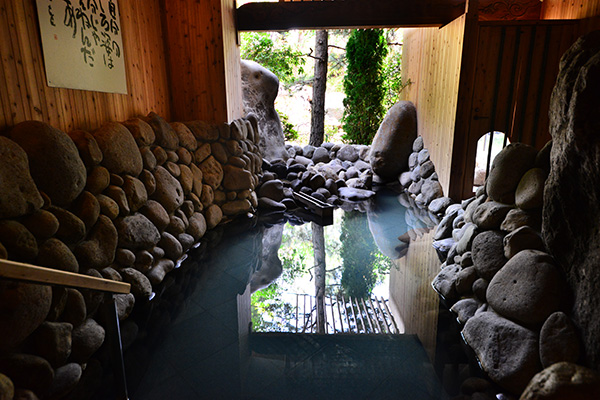 |
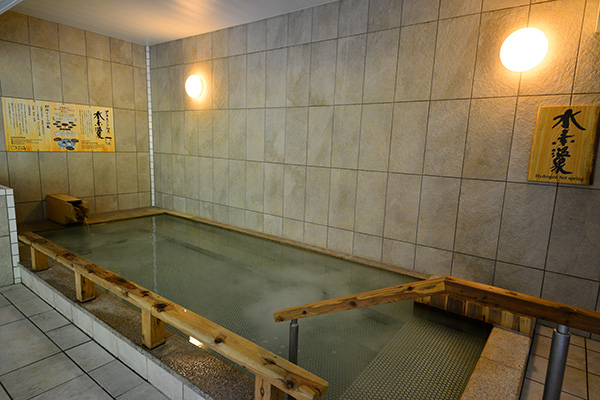 |
| A large bathtub with 100% natural free-flowing spring water. The rugged stone bath offers a view of the garden. The view is said to be a conscious reproduction of the traditional Jozankei landscape. | Very fine hydrogen bubbles are dissolved in the hot spring water. Hydrogen is expected to have an anti-aging effect by removing active oxygen, a substance that causes aging. It is also expected to reduce stress and beautify the skin. |
| Okuno-yu Yumemi "Hoto-no-yu" | Private bath "Suke-ana" |
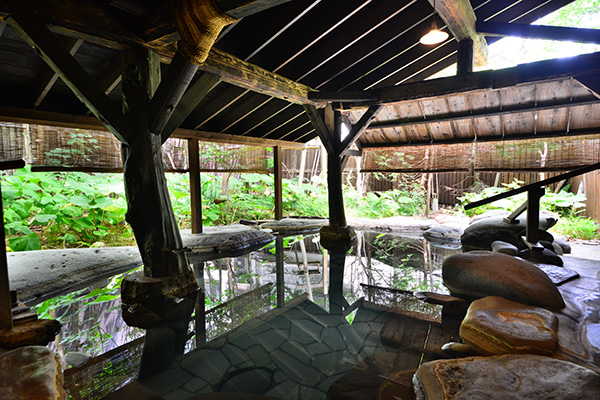 |
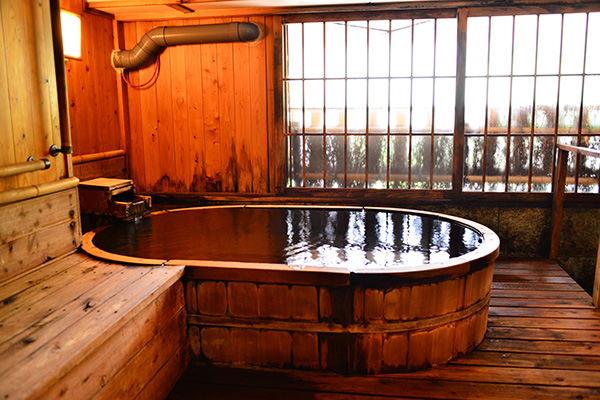 |
| This bathtub is perfect for meditating and facing oneself in a quiet space. The approach from the lobby to the “yumemi” is said to be inspired by the birth canal. The spring water is 100% natural free-flowing and gushes out from the bottom of the bathtub. | The two private baths are both made of barrels. The baths are 100% natural free-flowing and provide a luxurious bathing experience. The barrel baths are large enough for two adults. |
Rates Data
| Room with two meals | From 16,700 yen per night(without tax) |
|---|---|
| Room with breakfast | From 23,500 yen per night(without tax) |
| Overnight stay without meals | No settings |
| Private bath fee for overnight stay | From 2,200 yen (Free of charge depending on room type and plan) |
| Public bath fee for day trip | Adult: From 1,500 yen, Elementary school students: From 750 yen / Free for toddlers |
| Private bath fee for day trip | From 2,200 yen per room |
Transportation Access
| By train | Bus from New Chitose Airport, Sapporo Station, Makomanai Station |
|---|---|
| Shuttle bus | Yes (one round trip per day between NHK Sapporo Broadcasting Station and the inn ※Reservations required) |
| By car | Approximately 50 minutes from Sapporo via Route 230, 60 minutes from Otaru via Asari Pass on Route 1, 90 minutes from New Chitose Airport via Route 36 and Route 230 |
| Address | Hokkaido/Jozankei Onsen/Nukumori-no-yado FURUKAWA 4-353 Jozankei Onsen Nishi, Minami-ku, Sapporo, Hokkaido, 061-2303, JAPAN |
- Data
- 2025/12/25

